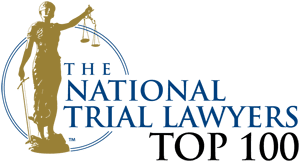Simply accessing the dark web is not illegal, but what you do there can lead to criminal consequences.
Engaging in illegal activities like downloading child pornography, trading stolen credit card numbers or buying weapons on the dark web can, of course, land you in hot water.
Accessing dark web content is risky. Even if you use it for legal activity like journalistic research or private communications, it’s important to take appropriate security measures when browsing. The dark web is rife with hidden links and malicious content, and a simple misclick can lead to legal trouble if you are not careful.
The dark web is often portrayed as a lawless frontier, but the reality is that law enforcement has a significant presence on it.
If you have been accused of illegal activity on the dark web, you should speak with a skilled criminal defense lawyer as soon as possible. Call the Helfend Law Group today at 800-834-6434 today for a free review of your case.
- What is the dark web?
- Is it legal to use the Tor network in the United States?
- Understanding the Dark Web and Its Purpose
- How to Access the Dark Web Safely
- The Anatomy of Dark Web Sites
- Risks Associated with Dark Web Activities
- Role of Law Enforcement Agencies in Monitoring Dark Web Use
- Maintaining Anonymity and Safety Online
- Get legal help today
What is the dark web?
The “dark web” refers to a part of the internet that is intentionally hidden from conventional search engines and browsers. The dark web is accessible via specialized software like the Tor browser (The Onion Router), which uses layered encryption to anonymize the user’s behavior.
The dark web forms a small part of the larger deep web, which includes all parts of the internet not indexed by search engines.
While the dark web is often associated with illegal activities due to its high degree of anonymity, it also serves legitimate purposes such as protecting privacy in oppressive regimes, securing communications and allowing for confidential whistleblowing.
Is it legal to use the Tor network in the United States?
Countries like China, Iran and Russia have taken significant measures to keep citizens from using the Tor network. In the case of China, the “Great Firewall of China” blocks the IP addresses of Tor relays and makes it difficult to download the browser from official sources.
Iran has taken a similar approach, while Russian authorities have pressured ISPs to block the Tor network and have proposed laws to outlaw the use of anonymity-enhancing technologies altogether.
In the United States, it is legal to use the Tor network.
The federal government’s stance on the Tor browser is nuanced. Through agencies like the National Science Foundation and the State Department, the federal government has historically funded and supported the development of Tor as a tool to help individuals bypass censorship and protect their identities in oppressive regimes.
However, knowing that the dark web is sometimes used to organized illegal activities, law enforcement agencies like the FBI actively work to penetrate dark web operations and prosecute illicit activities conducted using the Tor network.
Understanding the Dark Web and Its Purpose
The dark web accounts for roughly 5% of the entire internet. With dark websites like the Silk Road and Hansa Market making headlines over the years, it has gained a reputation as a hub of illegality, but the dark web also serves as a refuge for privacy-centric communication, helping journalists, whistleblowers and those under oppressive regimes to exchange information securely.
It’s part of the vast deep web, which is hidden from search engines and encompasses a staggering 90% of all web content.
Where was the dark web created?
The dark web was created through the efforts of researchers and developers associated with the U.S. Naval Research Laboratory.
In the mid-1990s, they developed Tor (The Onion Router), a system to enable anonymous communication over the internet. Initially intended for secure communication by the military and intelligence agencies, Tor later became publicly accessible, giving rise to what is now known as the dark web.
Distinction Between Deep Web and Dark Web
There is a lot of stuff on the internet not meant for wide-scale consumption. That is the deep web.
The deep web encompasses all parts of the internet not indexed by search engines. This includes private databases, email accounts and subscription-only content.
The dark web, a subset of the deep web, consists of sites and services intentionally hidden and accessible only through specialized browsers like Tor (“onion sites”). While the deep web includes everyday online activities requiring authentication, the dark web is known for its anonymity.
How to Access the Dark Web Safely
Accessing the dark web requires specialized software, with the Tor browser being the most widely used. Download Tor from its official website to ensure you have a legitimate copy. Once installed, Tor routes your internet traffic through a series of volunteer-operated servers worldwide, anonymizing your connection.
After setting up Tor, avoid logging into personal accounts or providing identifiable information. Use a VPN (Virtual Private Network) alongside Tor for an added layer of security and anonymity. This dual setup helps mask your IP address and encrypts your data, making it even harder for anyone to trace your online activities.
Precautions Before Entering the Dark Web
Before diving into the dark web, ensure your device is secure. Update your operating system, browser, and antivirus software to the latest versions. Disable scripts and plugins in your browser to prevent malicious code execution. Do not allow your browser to cache any images or resources. Be cautious about downloading anything.
Create a new, anonymous email account using a secure service like ProtonMail for any dark web interactions. Avoid reusing passwords and enable two-factor authentication whenever possible. These steps help protect your identity and personal information.
Choosing the Right Dark Web Tools
Selecting the appropriate tools for dark web exploration is crucial for maintaining anonymity. Besides the Tor browser, consider using Tails, a live operating system that runs from a USB stick and leaves no trace on your computer. Tails includes essential privacy tools like the Tor browser, an encrypted email client, and an encrypted chat client.
Another useful tool is Whonix, a security-focused operating system that runs inside a virtual machine. Whonix ensures all your internet traffic goes through Tor, adding an extra layer of protection against leaks and vulnerabilities.
The Anatomy of Dark Web Sites
Dark web sites differ significantly from traditional websites. They use the .onion domain, indicating they are accessible only via the Tor network. These sites lack conventional domain name structure, making them difficult to identify and navigate without specific URLs.
Dark web sites often have a basic design, focusing more on functionality than aesthetics. Many require registration or invite codes to access, adding another layer of exclusivity and security. Forums, marketplaces, and private communication channels are common types of dark web sites.
Decoding .onion URLs
Dot-onion URLs are not human-readable and consist of a string of random characters followed by “.onion”. These URLs are generated based on cryptographic keys, making them unique and resistant to guesswork. Bookmark trusted .onion URLs to avoid mistyping or falling for phishing attempts.
Use directories like The Hidden Wiki or specialized search engines like DuckDuckGo’s Tor version to find .onion URLs. Always verify the legitimacy of these sources to avoid malicious sites.
The Anonymous Nature of Dark Web Marketplaces
Dark web marketplaces operate on anonymity and trust. Buyers and sellers use pseudonyms, and transactions are typically conducted using cryptocurrencies like Bitcoin or Monero. Marketplaces have built-in escrow services to hold funds until both parties confirm the transaction, reducing the risk of fraud.
These platforms often feature user reviews and ratings to build reputability. However, even with these safeguards, scams and law enforcement stings are prevalent.
Risks Associated with Dark Web Activities
Engaging with the dark web comes with significant risks. Besides potential legal issues, users face threats like scams, phishing attacks and malware. Cybercriminals and hackers frequently target dark web visitors, seeking to exploit vulnerabilities.
Always be skeptical of unsolicited offers and too-good-to-be-true deals. Verify the reputation of vendors and forums before engaging. Regularly back up your data and use strong, unique passwords to minimize damage if compromised.
The Prevalence of Illegal Content
Illegal content is widespread on the dark web. This includes illicit drugs, counterfeit goods, stolen data, illegal content like child pornography and illegal services like hacking and assassination contracts.
Simply accessing or engaging with such content can lead to severe legal consequences.
Report any illegal activities you encounter to the appropriate authorities. Remember, just browsing certain illegal content can implicate you in criminal investigations.
Protecting Against Malicious Software
Malware is a constant threat on the dark web. Protect yourself by avoiding downloads from untrusted sources and scanning all files with reputable antivirus software. Consider using a sandbox environment to open suspicious files, isolating potential threats from your main system.
Regularly update your security tools and maintain a robust backup routine. This practice ensures you can recover from any malware infection with minimal disruption.
Role of Law Enforcement Agencies in Monitoring Dark Web Use
Law enforcement agencies worldwide monitor the dark web to combat illegal activities. Agencies like the FBI, Europol, and others have dedicated units that infiltrate marketplaces, track transactions, and apprehend offenders. Operations like the takedown of Silk Road and AlphaBay demonstrate their reach and capability.
Using advanced techniques, these agencies can de-anonymize users, especially those engaging in illegal activities. Always stay within legal boundaries and understand that anonymity is not foolproof.
Balancing Privacy and Surveillance
Balancing privacy and surveillance is a complex issue. While the dark web offers anonymity, it also attracts scrutiny from law enforcement. Legitimate users, like journalists and activists, must navigate this landscape carefully.
Understand your rights and the laws in your jurisdiction. Advocate for privacy and digital rights, but remain aware of the risks associated with dark web activities. Use strong encryption and anonymization tools to protect your privacy while staying vigilant against potential surveillance.
Maintaining Anonymity and Safety Online
Maintaining anonymity and safety online requires a combination of tools and best practices. Regularly update your software, use encrypted communication channels, and avoid sharing personal information. Consider using pseudonyms and compartmentalizing your online identities to reduce traceability.
Educate yourself about the latest security threats and mitigation techniques. Join privacy-focused communities and forums to stay informed and share knowledge. Continuous learning and vigilance are key to navigating the dark web safely.
Best Practices for Dark Web Users
- Stay Informed – Keep up with the latest security news and updates.
- Use Strong Encryption – Protect your communications and data.
- Maintain Anonymity – Use tools like Tor and VPNs to mask your identity.
- Avoid Illegal Activities – Stay within the bounds of the law.
- Verify Sources – Trust but verify. Always check the legitimacy of sites and services.
- Backup Data – Regularly back up important information.
- Practice Good Cyber Hygiene – Use strong, unique passwords and enable two-factor authentication.
- Stay Skeptical – Be wary of unsolicited offers and deals that seem too good to be true.
Following these best practices helps ensure a safer and more secure experience on the dark web.
Get legal help today
If you find yourself facing legal issues related to activities on the dark web, your next call should be to a lawyer.
Contact the Helfend Law Group today at 800-834-6434 for a free review of your case. Attorney Robert M. Helfend is ready to help protect your rights and provide the guidance you need.
Published June 7, 2024.
References
- California Health and Safety Code § 11352. http://leginfo.legislature.ca.gov/faces/codes_displaySection.xhtml?lawCode=HSC§ionNum=11352
- California Penal Code § 311.11. http://leginfo.legislature.ca.gov/faces/codes_displaySection.xhtml?sectionNum=311.11.&lawCode=PEN
- Computer Fraud and Abuse Act, 18 U.S.C. § 1030. https://www.law.cornell.edu/uscode/text/18/1030
- Protection of Children from Sexual Predators Act of 1998, 18 U.S.C. § 2252. https://www.law.cornell.edu/uscode/text/18/2252






